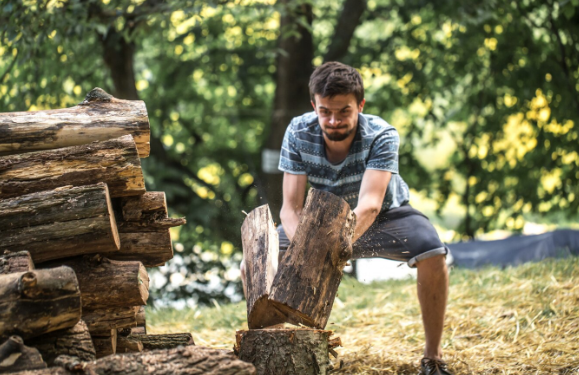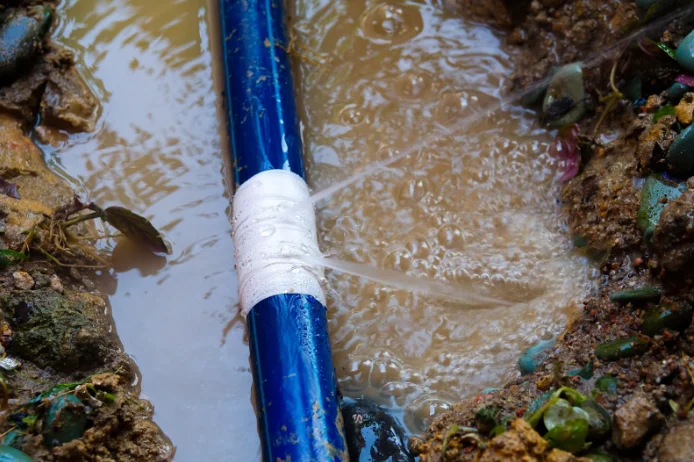The Hidden Impact of Stump Removal on Your Property

Tree removal is a common part of landscaping, but more often than not, homeowners ignore one critical step after cutting a tree down: stump removal. While tree stumps might seem like harmless remnants, they carry more weight than you might expect—not just in appearance, but in the health, safety, and value of your property.
Whether you’re a homeowner assessing your yard or a business trying to maintain a professional outdoor space, understanding the long-term effects of leaving tree stumps behind versus choosing removal is crucial.
This blog unpacks why stump removal is more than just an aesthetic choice. By the end, you’ll see why taking action can contribute to creating a safer, healthier, and more appealing outdoor environment.
Why Ignoring Stump Removal Can Be a Problem
Stumps Are More Harmful Than They Seem
Tree stumps can linger innocuously in a yard, but beneath their surface, a series of issues may develop:
- Pest Intrusion
A rotting tree stump can easily become a breeding ground for termites, ants, beetles, and other wood-boring insects that feed on decaying wood. Once these pests set up shop in your stump, they can eventually spread to nearby plants, fences, and even your house.
- A Safety Hazard
Stumps can be a tripping danger for residents and visitors, especially when hidden under overgrown grass or shaded areas. They also pose a unique challenge to children and pets who like to roam outdoors. Removing them eliminates unnecessary risks.
- Obstacle to Growth
Stumps can impede the natural growth of your landscape. If you’re planning to replant or redesign your yard, they can block root systems, leaving you with uneven terrain.
A Decline in Property Value
Unremoved stumps can have negative implications on property value, especially if you’re preparing to sell. They contribute to a neglected appearance, potentially turning off potential buyers. Even when using digital landscaping designs to showcase a property, outdated stumps stand out like a sore thumb.
If you aim to create maximum curb appeal, stump removal is a relatively simple action that makes a huge difference.
The Aesthetic Transformation Tree Stump Removal Delivers
Clean Lines, Open Spaces
Nothing disrupts the look of a well-manicured yard more than a lingering tree stump. By choosing to remove that stump, your outdoor space instantly expands, creating a clean and streamlined look. You open up more possibilities for garden designs, furniture placements, or even new construction.
Reclaiming Usable Space
Depending on the size of the stump, its removal can give you back a considerable area for practical or creative uses. That corner of your yard where an old oak stump sits could be the perfect place for a fire pit, a swing set, or even a small vegetable patch.
Enhanced Landscaping Flexibility
From extending a patio to planting ornamental trees, removing a stump frees up space for countless landscaping opportunities. You’ll no longer have to work around an obstacle, and the endless possibilities are sure to transform your vision into reality.
Environmental Benefits of Properly Removing a Tree Stump
Discarding the stump allows you to manage your yard’s health more efficiently.
Prevent the Spread of Disease
Tree stumps often harbor fungi that can infect nearby healthy trees and plants. These fungal infestations don’t remain stationary; they spread through soil and air, compromising the ecosystem of your yard. Stump removal can cut off this pathway of disease, preserving healthy vegetation.
Healthier Soil
Decaying stumps can block sunlight and precious nutrients from reaching the ground. By grinding or removing them, you replenish sunlight access and prevent any nutrient depletion caused by fungal decay.
Encouraging Biodiversity
Removing a stump can help promote biodiversity. Without a decaying centerpiece dominating your space, you’ll find more room for trees, shrubs, or artificial biodiversity projects like pollinator gardens that thrive and attract wildlife.
Stump-Free Yards and Their Economic Payoff
Taking care of a stump removal project isn’t just an investment in your yard’s aesthetics or health; it’s a financially smart move.
- Lower Lawn Maintenance Costs
Tree stumps often lead to uneven yards, which make mowing and gardening more arduous. Removing the stump reduces maintenance hassles and costs over time.
- Insurance Savings
Because tree stumps are tripping hazards that could result in injury claims, their removal can potentially improve your standing with home insurers.
- Higher Resale Value
A stump-free yard is often seen as a sign of careful maintenance, which attracts higher bids from buyers.
The Eco-Friendly Approach to Stump Removal
If you’re worried about the potential waste or environmental impact of removing tree stumps, the good news is that many services now offer eco-friendly solutions.
- Recycling Stump Mulch
Stump removal often involves grinding, which produces wood chips. These can be recycled as mulch to protect and nourish your garden.
- Minimal Soil Disruption
Professional removal services are skilled at removing stumps without adversely affecting the surrounding soil or root systems, keeping your landscape intact.
- Carbon Footprint Reduction
Opting for chemical-free, mechanical stump removal processes reduces emissions, allowing you to make an environmentally responsible choice.
Should You DIY or Hire Professionals?
When deciding to tackle stump removal yourself versus hiring professionals, carefully evaluate your expertise, tools, and time.
The Case for DIY Stump Removal
If the stump is small and you have experience with basic tools such as an ax, shovel, and chainsaw, DIY might work for you. Additionally:
- You have full control over the timeframe.
- It’s cost-effective, requiring fewer financial resources upfront.
However, DIY removal is not without risks:
- You may damage underground utilities or nearby plants.
- It’s physically demanding and may take more time than expected.
Why Professionals Are Worth It
Hiring professional stump removal services eliminates guesswork and ensures efficiency. Here’s why:
- They come equipped with specialized tools like stump grinders.
- Professionals understand soil and know how to avoid damage to underground pipes or cables.
- It’s faster and safer, especially for dealing with large, old, or deeply-rooted stumps.
Hiring experts ultimately gives you peace of mind, saving you time and effort while delivering superior results.
Solutions Tailored to Your Yard
At the end of the day, stump removal is an integral but often overlooked aspect of yard care. Whether for aesthetic reasons, environmental health, or financial peace of mind, the decision to remove old tree stumps creates space for beauty, biodiversity, and better landscaping. Entrusting an expert Stump Removal ensures the job is done safely, efficiently, and with long-term results in mind. Beyond improving the appearance of your yard, it also eliminates pest habitats, prevents unwanted tree regrowth, and clears the way for new design possibilities. For tailored advice, consider reaching out to professional stump removal services, especially if you want the best results. Remember, your yard is an investment, and every removed stump takes you a step closer to unlocking its full potential.
Recent Posts
Recent Comments

How Important Is Licensing for Plumbers in NSW?

HVAC Zoning: Is It The Key To Enhanced Comfort?

Critical Plumbing Procedures For A Bathroom Renovation Or Remodel

Bought A House? Invest In Water Line Replacement Before Moving In

Why Electricians Recommend Upgrading Old Switches and Lights Today

Variance in Finance: How CFOs Can Leverage Analytics Tools for Informed Decision‑Making

Mastering Event Planning: Finding the Perfect Function Space
